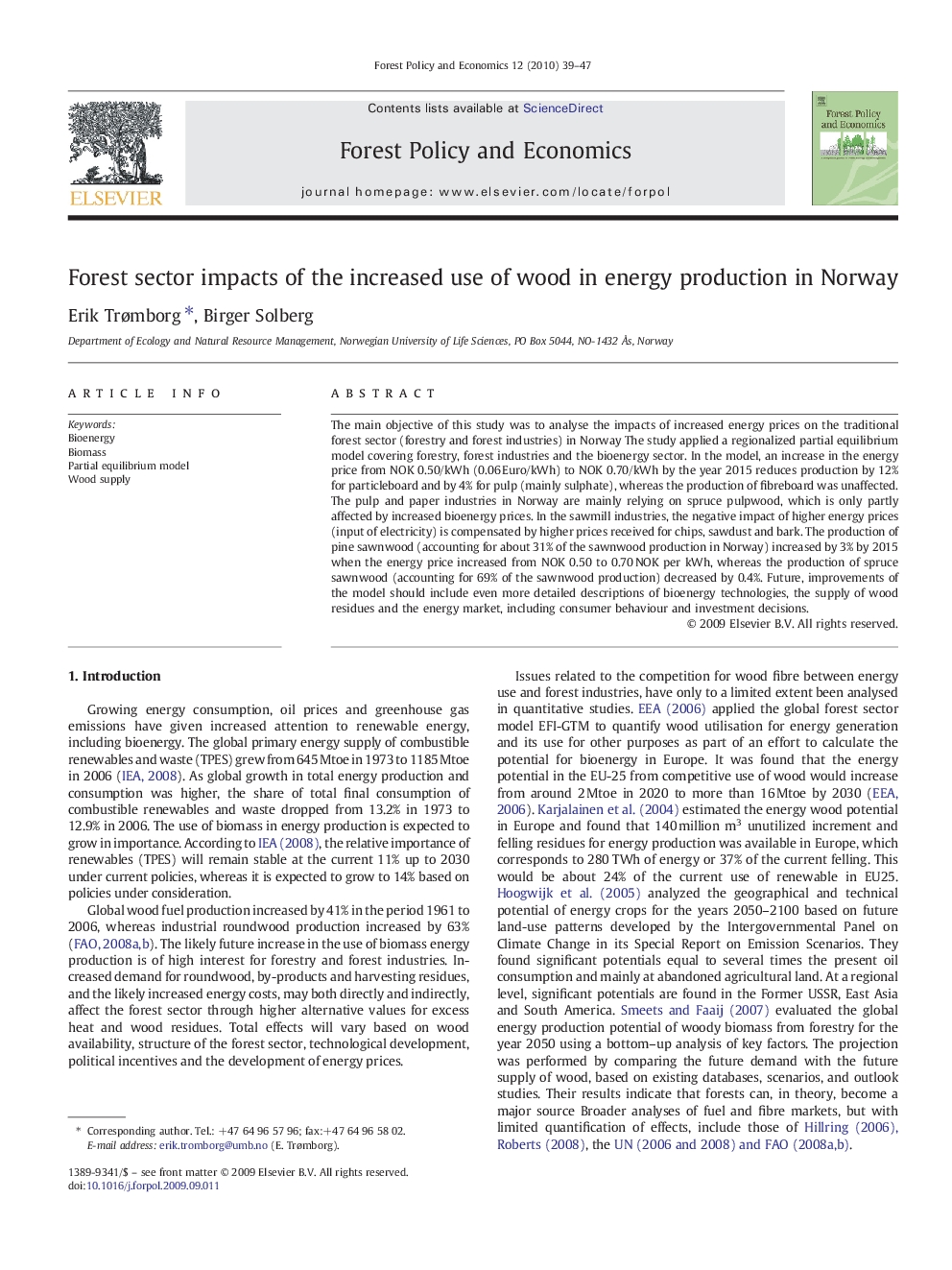| Article ID | Journal | Published Year | Pages | File Type |
|---|---|---|---|---|
| 91690 | Forest Policy and Economics | 2010 | 9 Pages |
The main objective of this study was to analyse the impacts of increased energy prices on the traditional forest sector (forestry and forest industries) in Norway The study applied a regionalized partial equilibrium model covering forestry, forest industries and the bioenergy sector. In the model, an increase in the energy price from NOK 0.50/kWh (0.06 Euro/kWh) to NOK 0.70/kWh by the year 2015 reduces production by 12% for particleboard and by 4% for pulp (mainly sulphate), whereas the production of fibreboard was unaffected. The pulp and paper industries in Norway are mainly relying on spruce pulpwood, which is only partly affected by increased bioenergy prices. In the sawmill industries, the negative impact of higher energy prices (input of electricity) is compensated by higher prices received for chips, sawdust and bark. The production of pine sawnwood (accounting for about 31% of the sawnwood production in Norway) increased by 3% by 2015 when the energy price increased from NOK 0.50 to 0.70 NOK per kWh, whereas the production of spruce sawnwood (accounting for 69% of the sawnwood production) decreased by 0.4%. Future, improvements of the model should include even more detailed descriptions of bioenergy technologies, the supply of wood residues and the energy market, including consumer behaviour and investment decisions.
